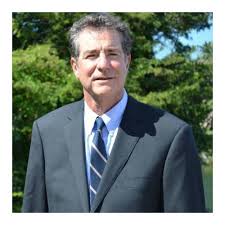Bill Sardi Article
Transl Oncol. 2008 Jul;1(2):65-72.
Immunotherapy for Prostate Cancer with Gc Protein-Derived Macrophage-Activating Factor, GcMAF.by Yamamoto N, Suyama H, Yamamoto N. Source Division of Cancer Immunology and Molecular Biology, Socrates Institute for Therapeutic Immunology, Philadelphia, PA
Abstract Serum Gc protein (known as vitamin D(3)-binding protein) is the precursor for the principal macrophage-activating factor (MAF). The MAF precursor activity of serum Gc protein of prostate cancer patients was lost or reduced because Gc protein was deglycosylated by serum alpha-N-acetylgalactosaminidase (Nagalase) secreted from cancerous cells. Therefore, macrophages of prostate cancer patients having deglycosylated Gc protein cannot be activated, leading to immunosuppression. Stepwise treatment of purified Gc protein with immobilized beta-galactosidase and sialidase generated the most potent MAF (termed GcMAF) ever discovered, which produces no adverse effect in humans. Macrophages activated by GcMAF develop a considerable variation of receptors that recognize the abnormality in malignant cell surface and are highly tumoricidal. Sixteen nonanemic prostate cancer patients received weekly administration of 100 ng of GcMAF. As the MAF precursor activity increased, their serum Nagalase activity decreased. Because serum Nagalase activity is proportional to tumor burden, the entire time course analysis for GcMAF therapy was monitored by measuring the serum Nagalase activity. After 14 to 25 weekly administrations of GcMAF (100 ng/week), all 16 patients had very low serum Nagalase levels equivalent to those of healthy control values, indicating that these patients are tumor-free. No recurrence occurred for 7 years.Prostatic cancer diagnosis and prognosis have been aided by the availability of PSA measurement . When patients received radical prostatectomy, a sudden drop of high PSA levels to very low values was observed (Table 1). Thus, PSA is predominantly produced from primary tumor lesions in prostate compared with the metastasized lesions. Although serum Nagalase decreased during GcMAF therapy of patients with tumor-bearing prostate, PSA remained unchanged (Table 3). Therefore, PSA values cannot be used for prognostic assays during GcMAF therapy.2008 Yamamoto Human Trial GCMAF in Metastatic Colorectal Cancer
11) Yamamoto, Immunotherapy of metastatic colorectal Can Imm Imm 2008
http://www.ncbi.nlm.nih.gov/pubmed/18058096
Cancer Immunol Immunother. 2008 Jul;57(7):1007-16.
Immunotherapy of metastatic colorectal cancer with vitamin D-binding
protein-derived macrophage-activating factor, GcMAF. by Yamamoto N,
Suyama H, Nakazato H, Yamamoto N, Koga Y. Division of Cancer Immunology
and Molecular Immunology, Socrates Institute for Therapeutic
Immunology, 1040, 66th Ave, Philadelphia,
Serum vitamin D binding protein (Gc protein) is the precursor for the principal macrophage-activating factor (MAF). The MAF precursor activity of serum Gc protein of colorectal cancer patients was lost or reduced because Gc protein is deglycosylated by serum alpha-N-acetylgalactosaminidase (Nagalase) secreted from cancerous cells. Deglycosylated Gc protein cannot be converted to MAF, leading to immunosuppression. Stepwise treatment of purified Gc protein with immobilized beta-galactosidase and sialidase generated the most potent macrophage-activating factor (GcMAF) ever discovered, but it produces no side effect in humans. Macrophages treated with GcMAF (100 microg/ml) develop an enormous variation of receptors and are highly tumoricidal to a variety of cancers indiscriminately. Administration of 100 nanogram (ng)/ human maximally activates systemic macrophages that can kill cancerous cells. Since the half-life of the activated macrophages is approximately 6 days, 100 ng GcMAF was administered weekly to eight nonanemic colorectal cancer patients who had previously received tumor-resection but still carried significant amounts of metastatic tumor cells.
Jeffrey Dach MD
Disclaimer click here: http://www.drdach.com/wst_page20.html
The reader is advised to discuss the comments on these pages with
his/her personal physicians and to only act upon the advice of his/her
personal physician. Also note that concerning an answer which appears as
an electronically posted question, I am NOT creating a physician --
patient relationship. Although identities will remain confidential as
much as possible, as I can not control the media,
I can not take responsibility for any breaches of confidentiality that may occur.
Copyright (c) 2013 Jeffrey Dach MD All Rights Reserved. This article may be reproduced on the internet without permission, provided there is a link to this page and proper credit is given.
FAIR USE NOTICE: This site contains copyrighted material the use of which has not always been specifically authorized by the copyright owner. We are making such material available in our efforts to advance understanding of issues of significance. We believe this constitutes a "fair use' of any such copyrighted material as provided for in section 107 of the US Copyright Law. In accordance with Title 17 U.S.C. Section 107, the material on this site is distributed without profit to those who have expressed a prior interest in receiving the included information for research and educational purposes.
(Note: You can view every article as one long page if you sign up as an Advocate Member, or higher).





